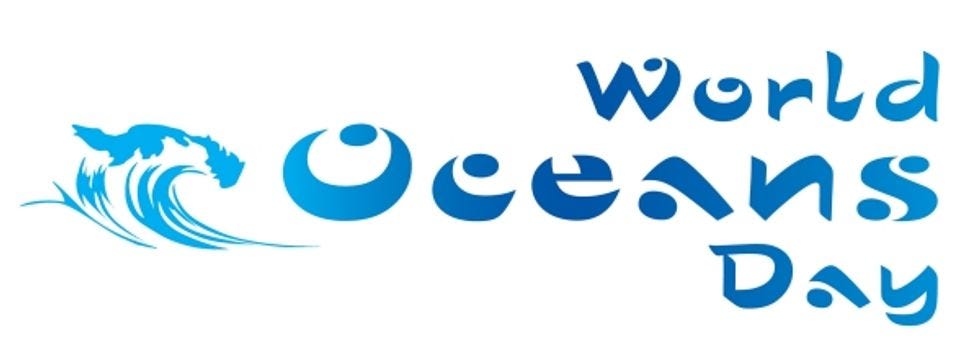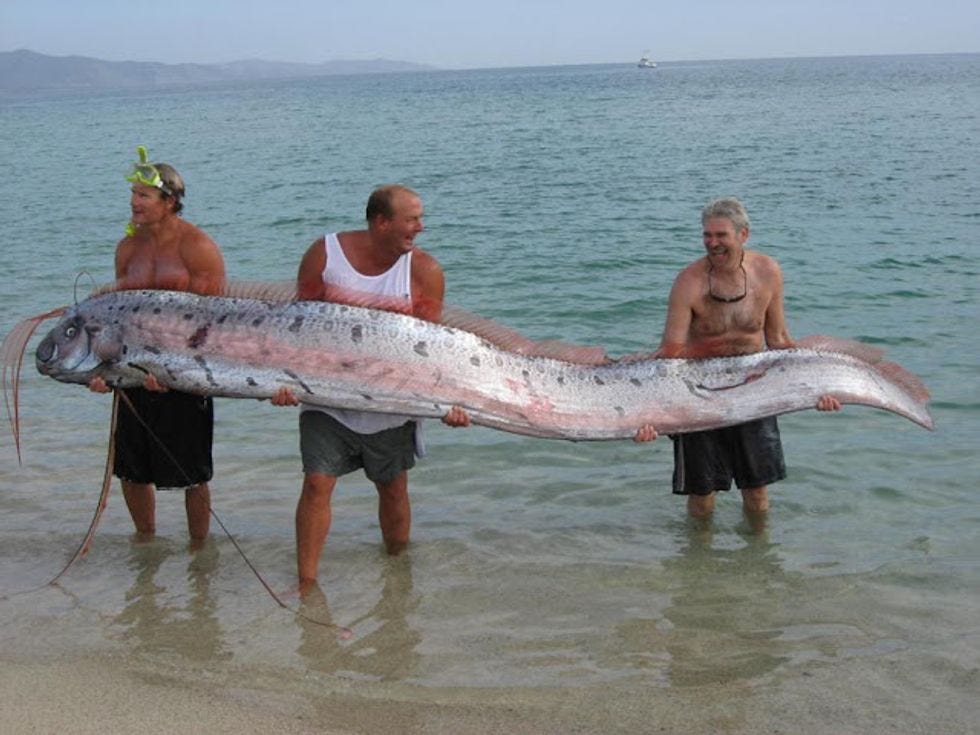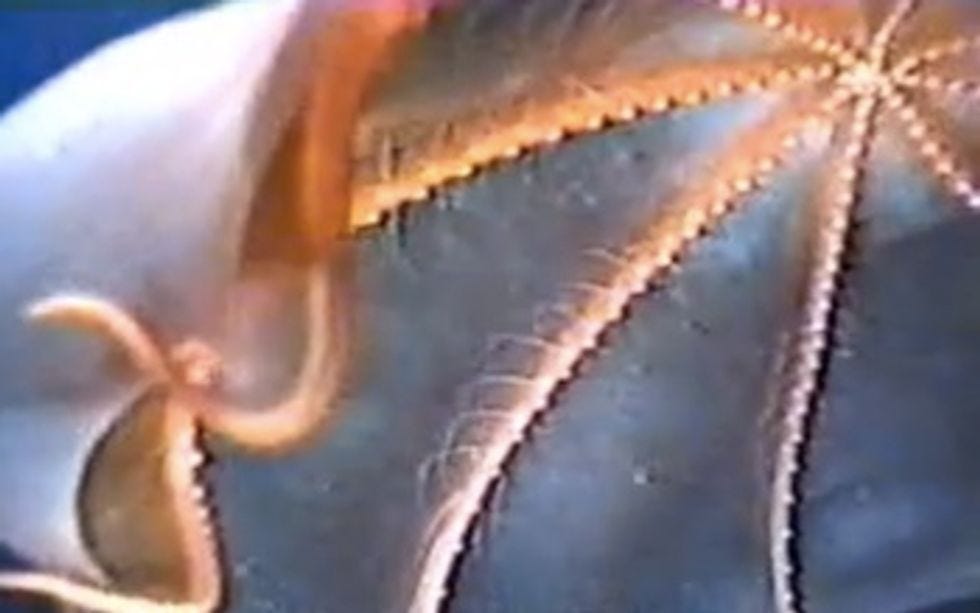Creature Features: Your Late Afternoon Friday Morning Sci-Blog!
Yesterday morning, an ill wind came
Blew your picture right out of the picture frame
Even blew the candle out from underneath the flame
Yesterday morning, an ill wind came
- John Prine
Hello Wonkeratti! It's time once again to punish all of you with yet another appalling Wonkette Sci-Blog. You haven't been especially naughty lately - we just enjoy upsetting you.
We are seven days into what is looking like a very active Atlantic Hurricane season and already there's a tropical storm pummeling the East Coast of the U. S. The statistics for the 2013 tornado season are sobering: 478 tornados reported (131 verifed by the NWS), 44 deaths and 8 "killer" tornadoes. The EF-5 tornado outside El Reno, Oklahoma that killed Dr.Tim Samaras (one of the world's most experienced tornado scientists) and his team was 2.6 miles wide, the widest ever recorded the widest ever recorded. The EF-5 storm that tore a swath of destruction through Moore, Oklahoma on May 20th killed 24 -- this in a city that's right in the center of Tornado Alley and knows tornadoes. The storm formed and moved so rapidly that residents had about 16 minutes warning. Dangerous weather isn't restricted to the Midwest or the Coasts, though, as we saw with the 2010 Brooklyn tornado or the June 2012 Midwest to Mid-Atlantic Derecho storm that pummeled Washington D.C.
While it's not correct to link specific storms to Anthropogenic Climate Change, it has been established that increasing global temperatures make the incidence of severe weather more likely and the storms more dangerous. The answer is probably not "Let's just do nothing."
People who live in places prone to dangerous events -- hurricanes, earthquakes, and so forth -- tend to take the possibility of these events happening to them seriously and develop strategies and procedures that help to deal with them. These events can happen anywhere, at any time, these days and preparing for them is becoming a better idea for everybody. That's why we present to you, as a Wonkette Community Service, some handy links to some essential preparedness information. Because we like you. And your pageview/revenue-generating eyeballs.
Preparedness:
The CDC's Guide to the Zombie Apocalypse sounds silly but it has a lot of very good general disaster preparedness information. Also, Zombies (Protip: the nice couple at your door who want to borrow a cup of BRAAINS - don't let them in)
FEMA's Ready.Gov site for general disaster preparedness
The ASPCA's Pet and disaster preparedness page. (protip: do not lash doggy's crate to roof of car, even if you don't plan on running for president)
The Disaster Center site with a lot of essential links.
Monitoring:
NOAA's Storm Prediction Center.
NOAA's Tsunami Information Center with links to monitoring buoys and stations.
Recovery:
The Disaster Center's list of Agencies and Non-Profit disaster relief organizations.
The American Red Cross Safe and Well notification program
This is by no means a comprehensive list, but it should be a good base to get you started on your preparedness program with. Feel free to add to the list in the comments.
Here is a made-for-Wonkette Sci-Blog story: Evolutionary marine biologists in Australia have found that the female Bottletail squid not only uses the male's sperm packets for fertilizing their eggs, but they like them as a handy snack too. Why does that sound vaguely familiar?
Well, now absolutely everybody is talking about eating Cicadas. Last Wednesday NPR's All Things Considered aired an interview with Jenna Jaden , the author of Cicada-licious, our go-to book for excellent entertaining with insects. Now every totebagger in the Mid-Atlantic area will be arguing over the best kind of organic, craft, sustainably harvested Malbec to have with their Cicada entrée and I shall surely Go Mad.
Of course, that is all merely a lead-in for your Cicada Recipe of the week:
Banana Cicada Bread
Ingredients:
1/2 cup shortening
3/4 cup sugar
2 bananas, mashed
2 cups flour
1 teaspoon soda
1 teaspoon salt
1/2 cup chopped nuts
2 eggs
1/4 cup dry-roasted cicadas
Directions:
Mix together all ingredients. Bake in greased loaf pan at 350 deg F for
about one hour.
Yield:
1 loaf
Attention all you Musicians in the Mid-Atlantic Brood II area: WFMU's Kurt Gottschalk wants recordings of you Jamming with Cicadas! Be my guest. It will probably turn out a lot like this.
Of course for Bug Tunes, nobody beats Tom Waits.

June the 8th is World Oceans Day and there's a lot of educational, volunteer and fun activities happening all over. Go Here to see what's happening in your area!

Marine researchers have recently released some amazing videos of the extremely rarely sighted Oarfish in the wild. Really neat.

Here is your Cephalopod of the Day: the weird bio luminescent Great Glowing Octopus! (Sounds like something Captain Haddock would shout at Thomson and Thompson! Or maybe at the Thompson Twins -- the Great Glowing Octopus will hold you now.)

Are you too impatient to wait for Global Warming to melt Antarctica so you can see what it really looks like? The British Antarctic Survey has the new map for you, then!

A group at the University of Hawaii's Institute for Astronomy, is proposing a huge heat-seeking telescope ("Goliath") that, if built, could find hypothetical alien civilizations by their heat signatures. I'm not sayin' it's Aliens, but...

Astronomers got a very good view - and a lot of good data - when Comet Lovejoy passed so close that it flew through the Sun's Corona. No, not that Lovejoy.
OK, that's all folks. Don't forget to misbehave yourselves, now.
Sorry this is tardy, folks. Had some literal and nonliteral fires to put out & a minor Brain Insurrection at the lab (protip: Flood Insurance doesn't cover oxygenated Fluorine-based nutrient solution).



The problem is that "Accelerated climate change driven by persistent, although not monotonic, increases in globally averaged temperature" just doesn't roll off the tongue.
I upfisted that for being beautifully put and wickedly accurate. But couldn't you leave this stuff to ifthethunderdontgetya, who's annoying, and therefore easier to ignore?